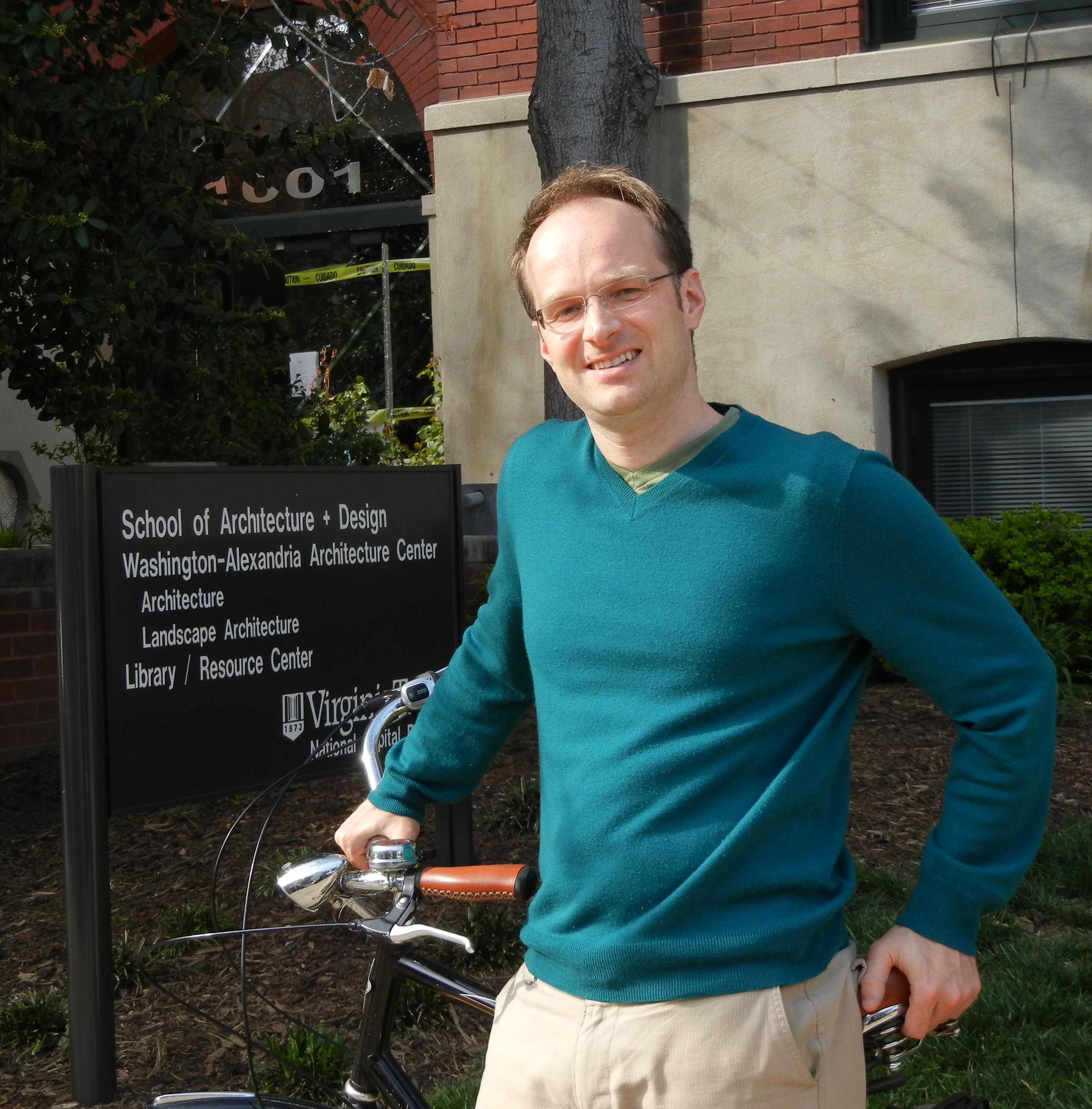Ralph Buehler study shows that bicycle use in nine large North American cities has more than doubled in last 20 years

Cycling rates have increased much faster in Chicago; Minneapolis; Montréal; New York City; Portland, Ore.; San Francisco; Toronto; Vancouver, Canada; and Washington, D.C., than in their countries as a whole, at least doubling in all the cities since 1990.
This is one of the findings of a study co-authored by Ralph Buehler, assistant professor, Department of Urban Affairs and Planning, Virginia Tech National Capital Region, and John Pucher, professor, Edward J. Bloustein School of Planning and Public Policy, Rutgers University.
“These nine cities in the United States and Canada have increased their cycling rates because they have implemented a wide range of infrastructure and programs to promote cycling and increase cycling safety,” said Buehler. “They have expanded and improved bike lanes and paths, traffic calming, parking, bike-transit integration, bike sharing, training programs, and promotional events.”
Buehler said that in Portland, for example, “a comprehensive package of cycling policies has succeeded in raising cycling levels six-fold and provides an excellent example for other North American cities to follow.“
The study, Bicycling Trends and Policies in Large North American Cities: Lessons for New York, researched trends over the past two decades in cycling levels, safety, and policies. It was sponsored by the University Transportation Research Center (UTRC), New York, and the Research and Innovative Technology Administration of the U.S. Department of Transportation (RITA). The latter is responsible for coordinating research and education programs, offering vital transportation statistics and analysis, and supporting national efforts to improve education and training in transportation-related fields.
Buehler and Pucher found that there is much spatial variation in cycling rates. The bike share of work commuters is more than twice as high in Canada as in the United States, and is higher in the western parts of both countries. Cycling is concentrated in central cities, especially near universities and in gentrified neighborhoods near the city center.
“The Washington, D.C., region is a good example,” Buehler said. “The bike share of commuters exceeds two percent in northwest Washington, D.C., but is almost nonexistent, 0.05 percent, in Anacostia, the easternmost part of D.C. The inner suburbs to the north and northwest of the city have bike mode shares ranging from 0.70 percent to 1.11 percent, while the inner suburbs to the southeast of the city have bike mode shares as low as in Anacostia. South of the Potomac River in Virginia, Alexandria and Arlington County have bike mode shares of 0.82 percent and 0.89 percent, respectively. The census tracts with the highest bike mode shares are in the neighborhoods of Capitol Hill, U Street, Adams Morgan, and Georgetown.”
Other findings in the study include
- Although cycling has almost doubled in New York City since 1990, when compared to other case study cities, it has the lowest bike share of commuters, the highest cyclist fatality and injury rate, and the lowest rate of cycling by women.
- Cycling levels have increased in both the United States and Canada, while cyclist fatalities have fallen. The number of bike commuters in the United States rose by 64 percent from 1990 to 2009, and the bike share of commuters rose from 0.4 percent to 0.6 percent. Over the shorter period from 1996 to 2006, the number of bike commuters in Canada rose by 42 percent, and the bike share of commuters rose from 1.1 percent to 1.3 percent.
- From 1988 to 2008, cycling fatalities fell by 66 percent in Canada and by 21 percent in the United States; serious injuries fell by 40 percent in Canada and by 31 percent in the United States.
- Almost all the growth in cycling in the United States has been among men between 25 and 64 years old, while cycling rates have remained steady among women and fallen sharply for children.
Based on this study for the U.S. Department of Transportation, Buehler, Pucher, and Mark Seinen, a graduate student in urban affairs and planning at Rutgers, have written an article, ”Bicycling Renaissance in North America? An Update and Re-Appraisal of Cycling Trends and Policies,” which has been accepted for publication in a future issue of Transportation Research Part A: Policy and Practice.
Buehler and Virginia Tech graduate assistants Andrea Hamre of Alexandria, Va., earning a master’s degree in agriculture and applied economics in the College of Agriculture and Life Sciences, and Dan Sonenklar of Richmond, Va., earning a master’s degree in urban affairs and planning in the College of Architecture and Urban Studies, are currently working on another study focusing on determinants of cycling in the Washington, D.C., area. This study is funded by the Mid-Atlantic University Transportation Center and the Virginia Tech Transportation Institute.




